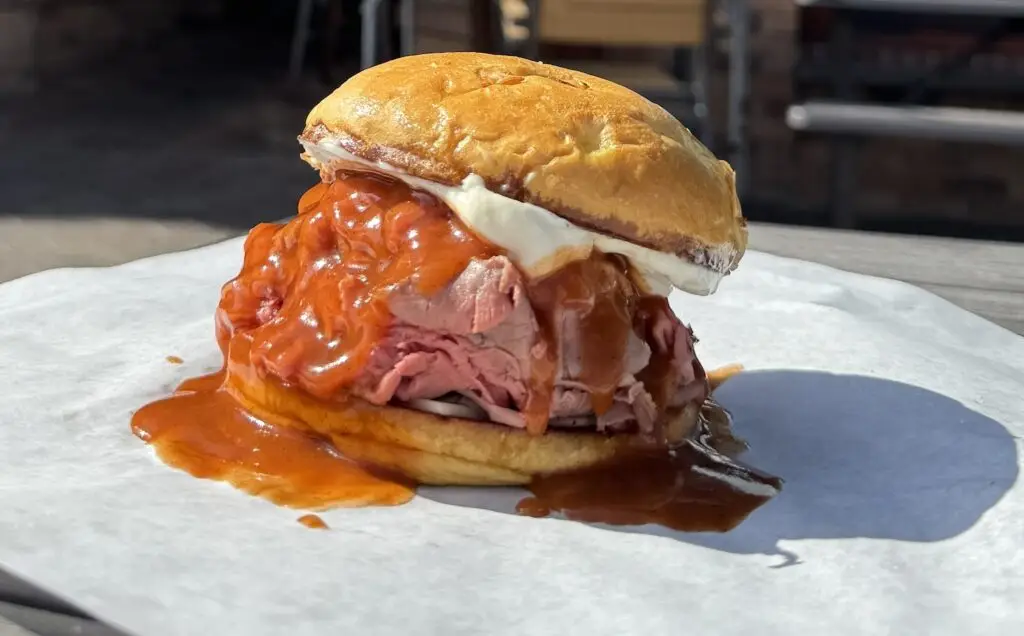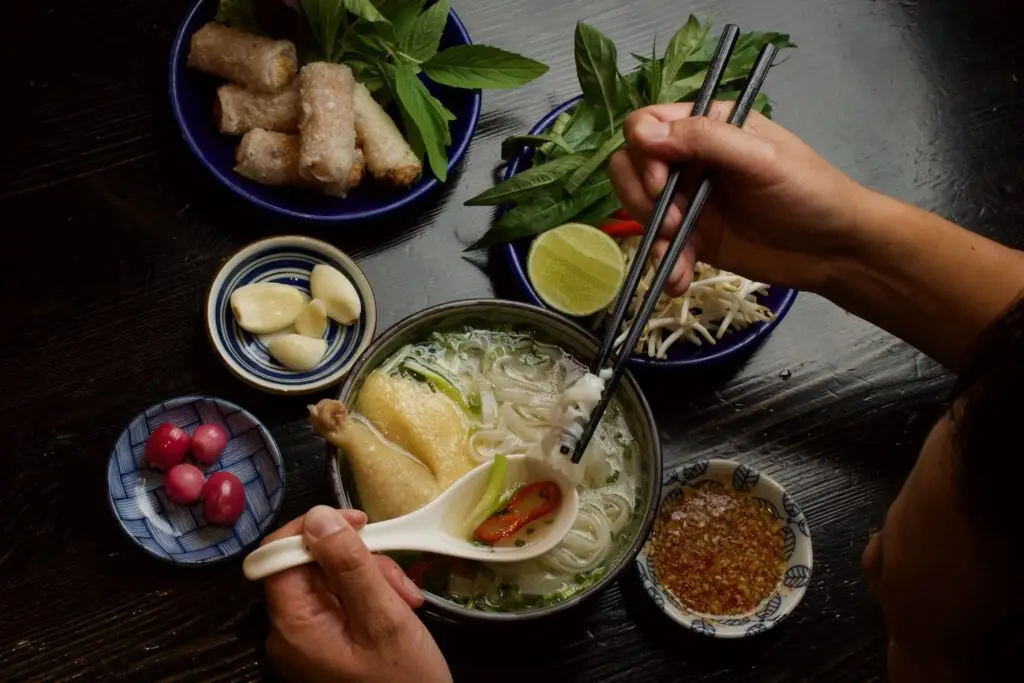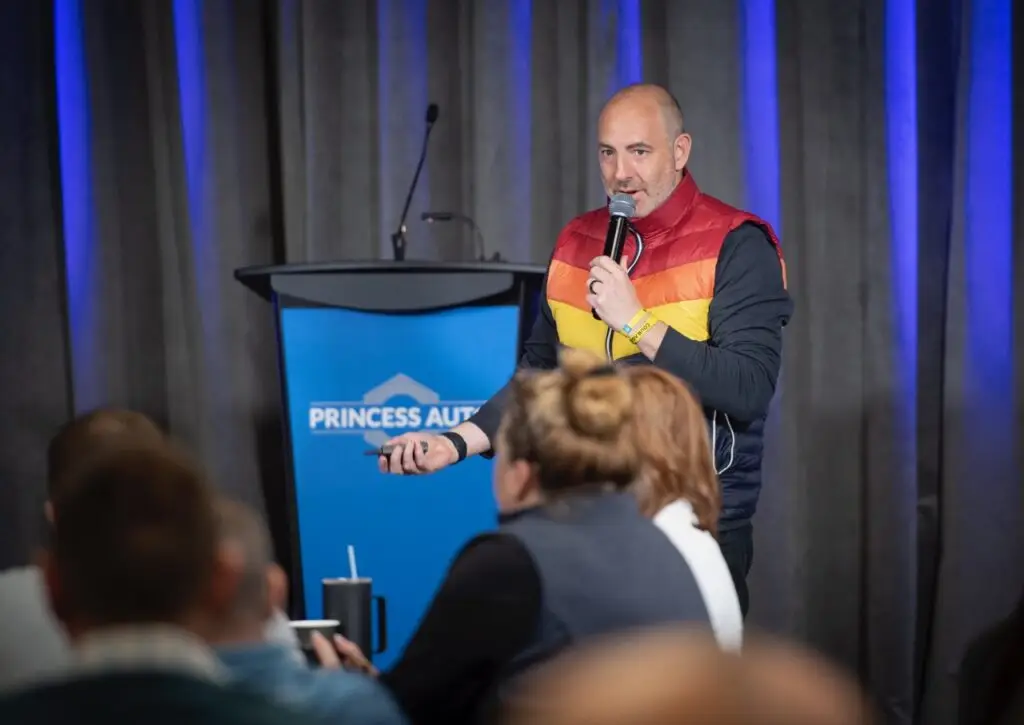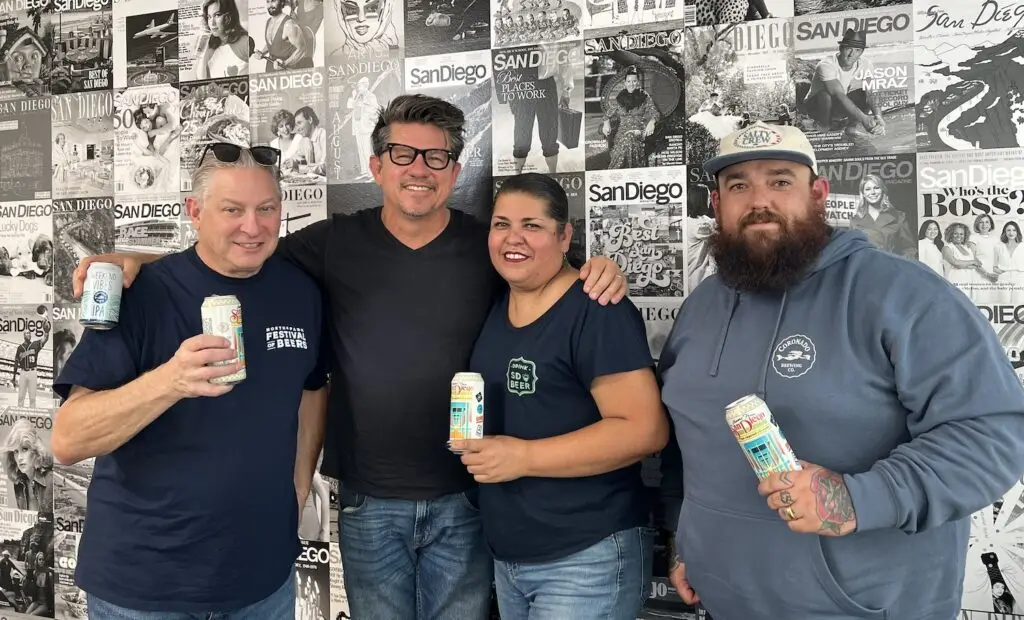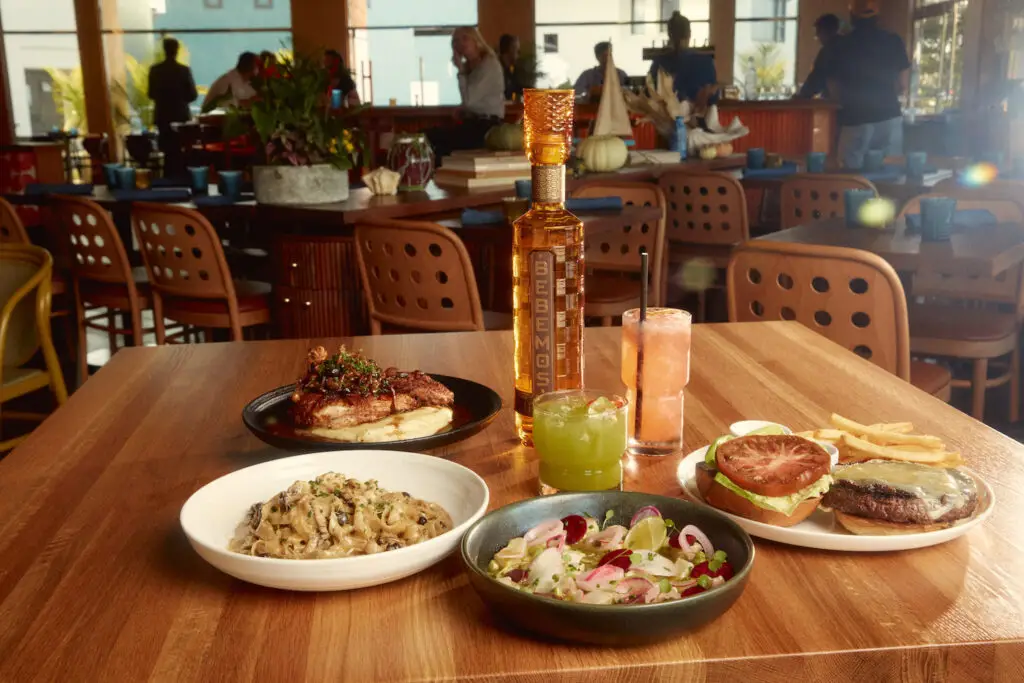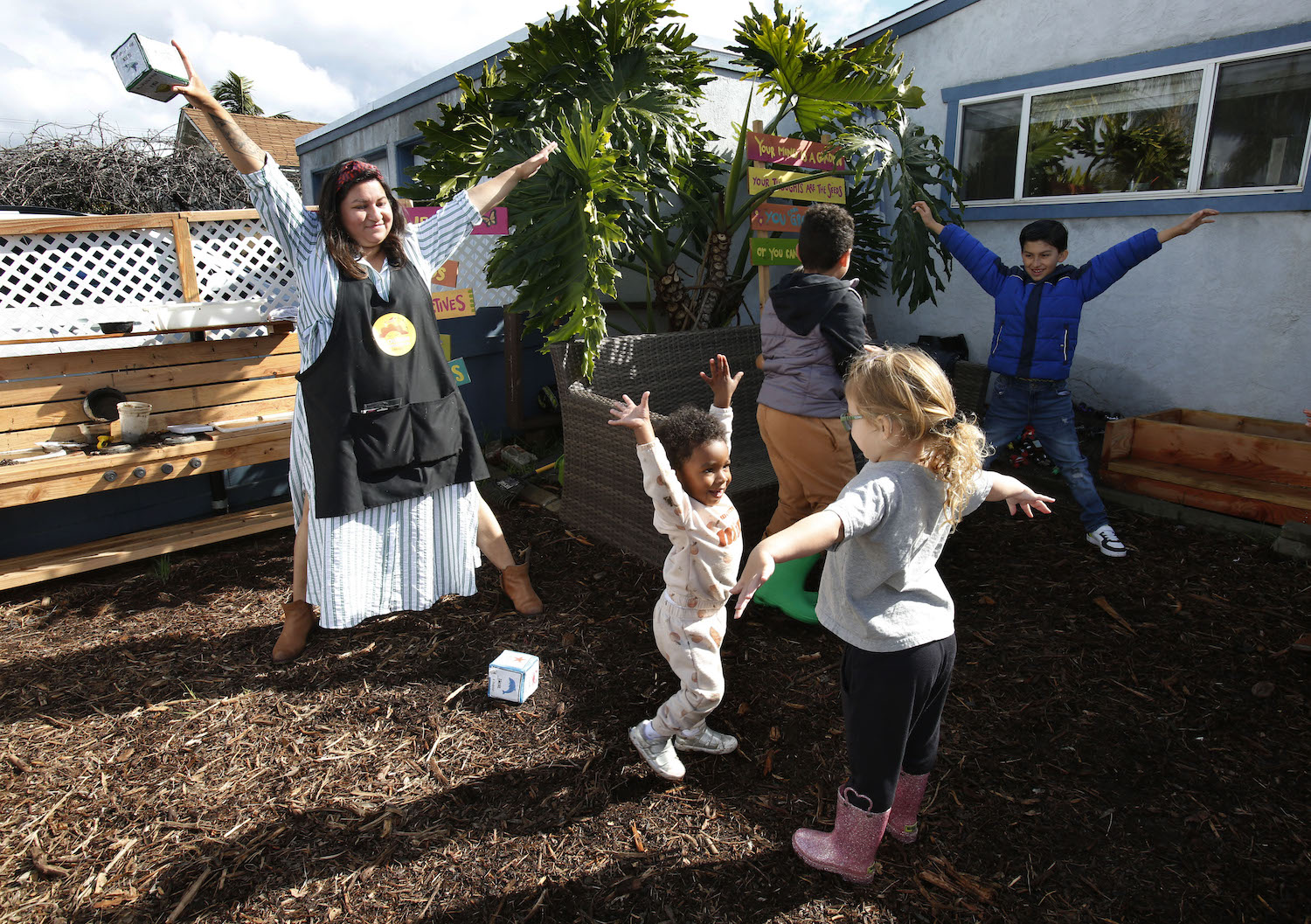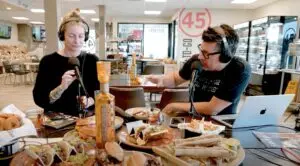I arrive at a 12-acre farm in Winola, near Julian. The air smells sweet, and the ground is covered with green, fresh grass. Fauna Coghill and two of her homeschooled daughters, Paisley (7) and Fiona (10) Coghill, give me a tour of the site.
First, we visit the petting zoo, where Fiona bottle-feeds a baby goat whose mom rejected it. Next, we go into the reptile exhibit the 10-year-old helps manage, where she starts opening cages and taking snakes out—some small, some four or five feet long—and wrapping them around her body. She knows all their names, what they eat, and how big they grow.
“This is a king snake, and he can eat other snakes, so if he and a rattlesnake got into a fight, he would win. You want a king snake at your house,” Fiona says confidently.
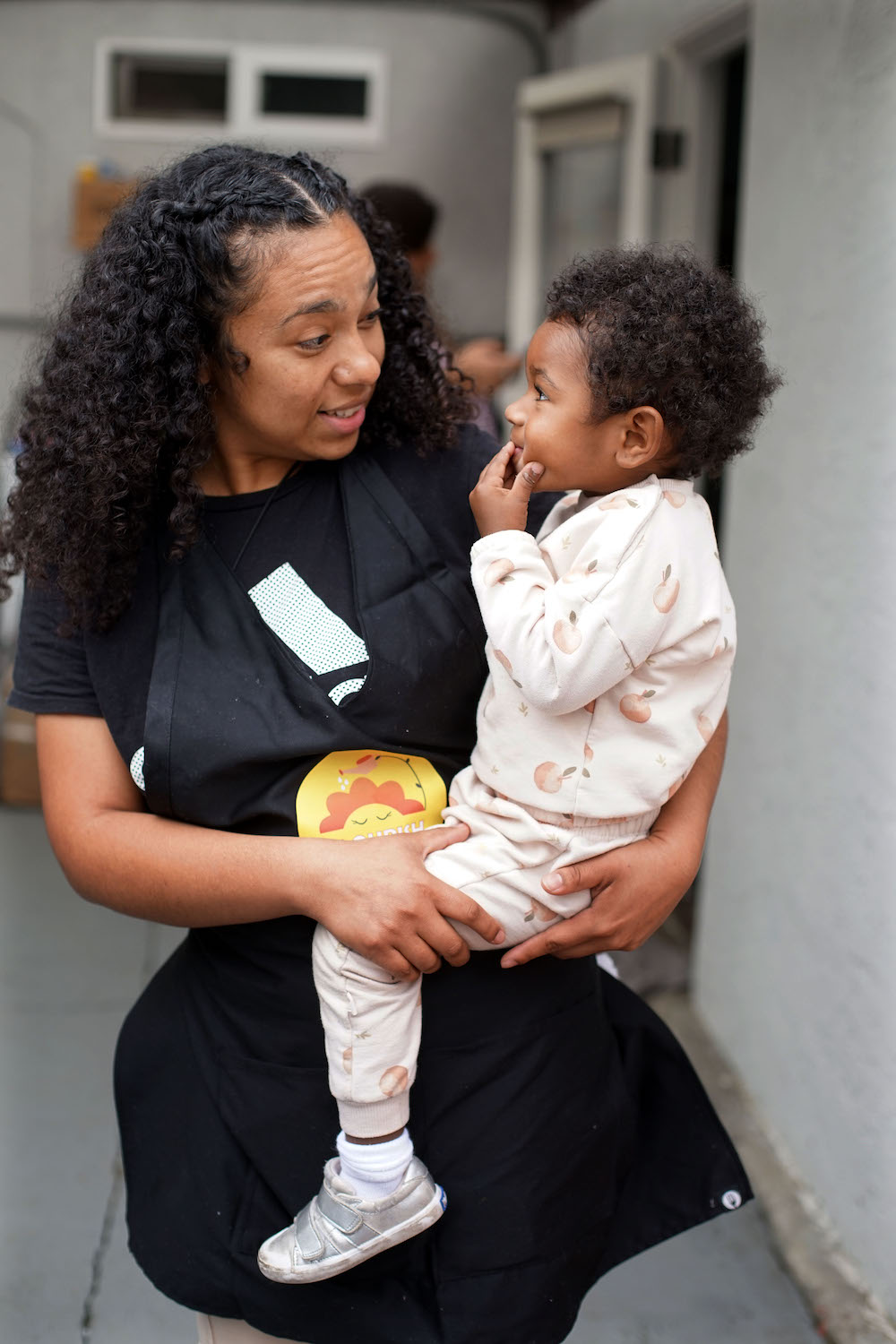
School looks different out here. And Paisley and Fiona aren’t alone.
According to a Washington Post survey, the number of children who are homeschooled in the San Diego Unified School District increased 129 percent between 2017 and 2023. This is one of the biggest jumps in California. Enrollment at the district’s public schools has fallen 14 percent in the last decade, despite the boost provided by the addition of universal transitional kindergarten—a public pre-K grade level for 4-year-olds—in the 2022–2023 school year.
The Coghills have lived in an RV parked on the farm for nearly two years. Fauna trades work for rent and utilities. The family spends their days together unschooling—a flavor of homeschooling that dictates that children will learn on their own, guided by their interests, without a set curriculum.
“Watching their growth, their learning spurts, has been mind-blowing to me,” Fauna says. “[Learning] just happens. You don’t have to make it happen.”
To be able to homeschool, Fauna has filed a Private School Affidavit with the State of California. She has to renew it every year.
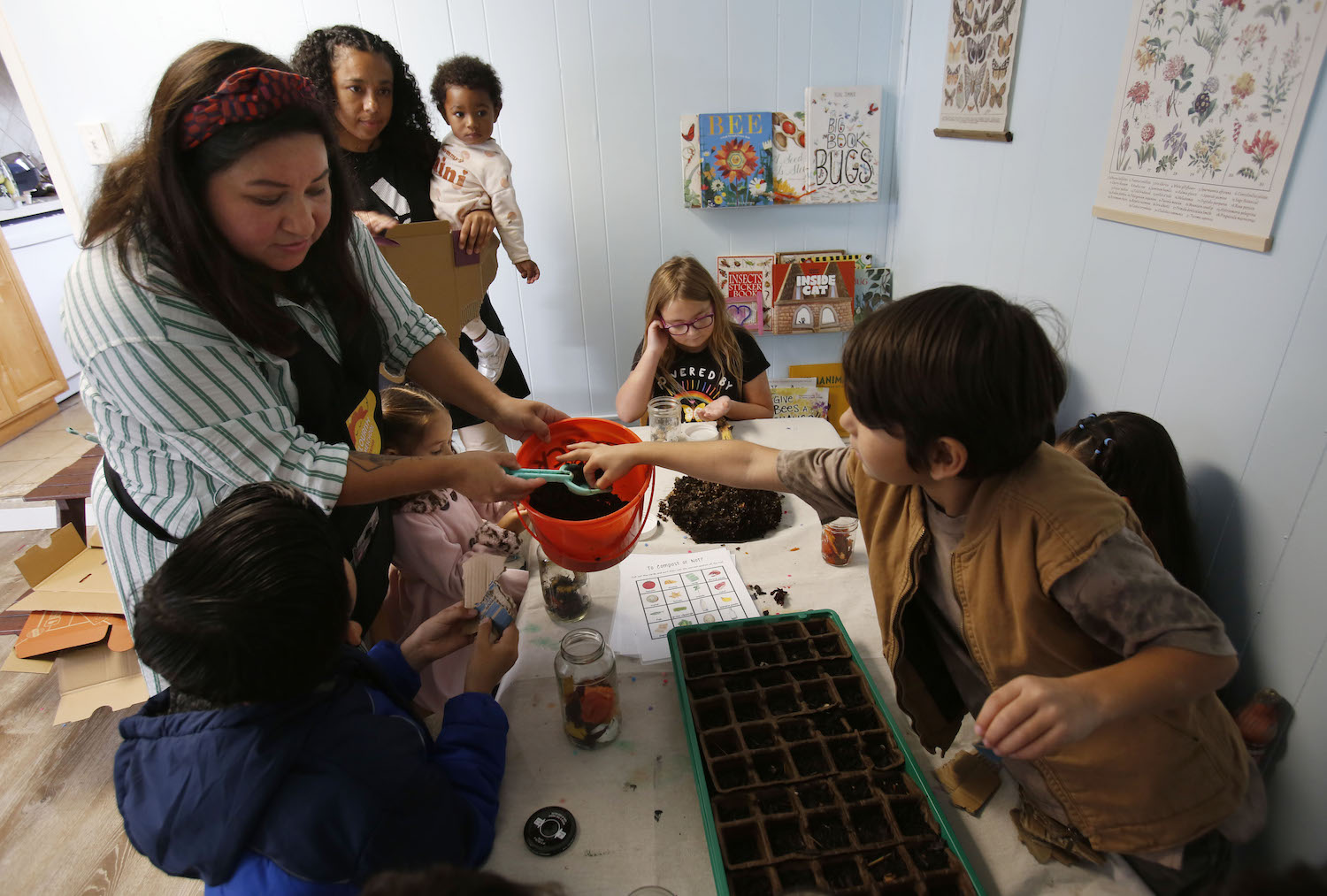
But that’s not the only way to choose an alternative learning path.
In the heart of Clairemont, Jannet Dominguez sits at a table with seven children, telling them what foods can be composted. Each of them has a mason jar, and she helps them put banana peels, coffee grounds, and other kitchen scraps inside. Two of them play with a roly poly, passing it back and forth between their fingers.
“My son was diagnosed with autism [when he was entering kindergarten],” Jannett says. She was not satisfied with her school district’s Individualized Education Program, an education and accommodation plan for children with additional needs. “Something in me just said, ‘Pull them out. Let’s see what’s out there.’”
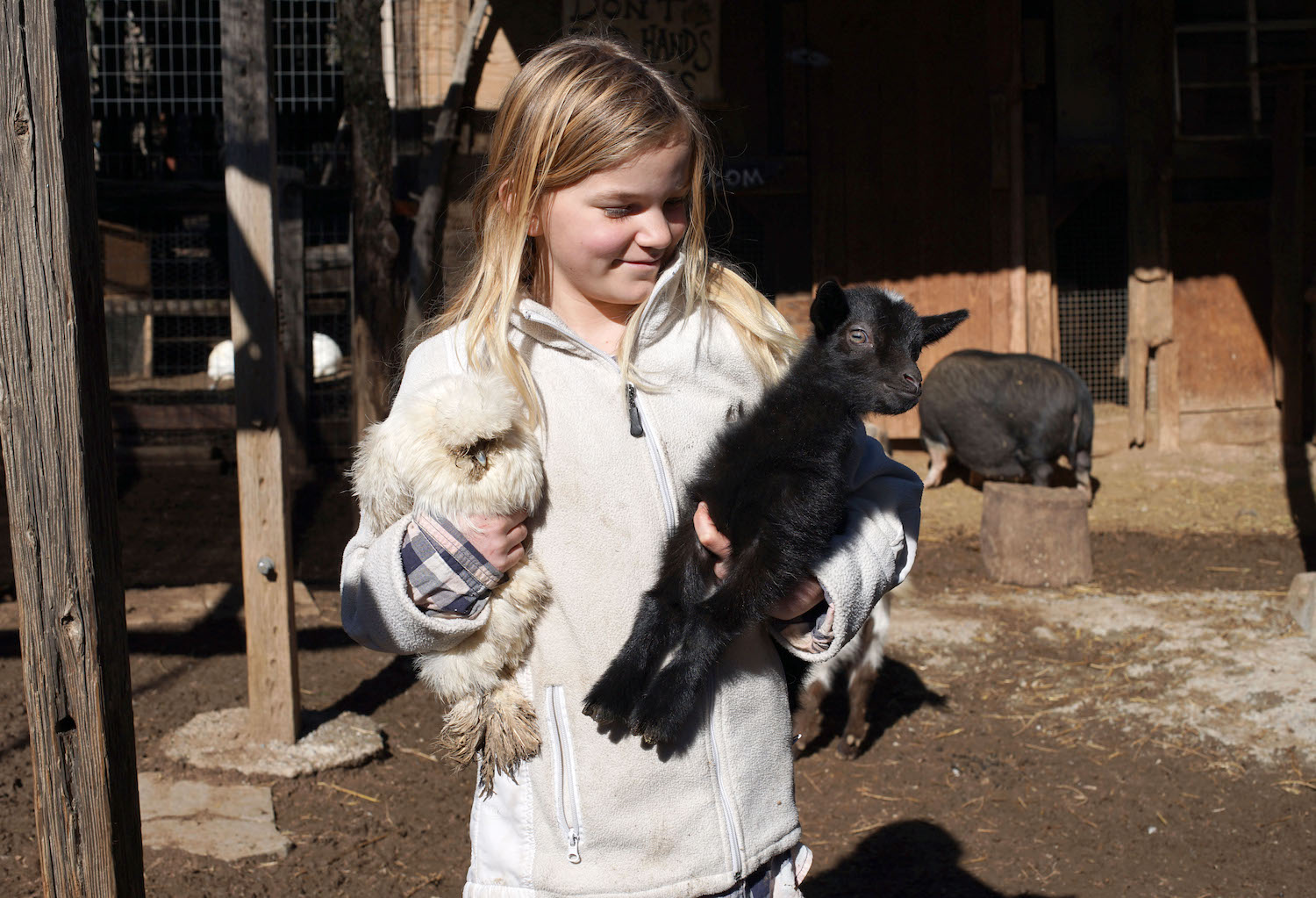
10-year-old Fiona helps care for livestock on the Winola farm where her family lives.
Jannet enrolled her two kids in a non-classroom-based (NCB) program, where students spend less than 80 percent of their time in a classroom. NBCs vary in instruction models, from independent learning to project-based study and at-home education.
“I have to turn in samples and sort of go by the curriculum for his grade level, but we do our own thing. We learn what he wants to learn,” Jannet says. She also receives funds that can be put toward various educational expenditures, from purchasing materials (printer paper and crayons) to scheduling in-person classes or activities.
Jannet also created Flourish Homeschool Community, a group supporting San Diego families choosing to homeschool. She organizes free park meetups, community classes, and demonstrations on subjects ranging from chess to science.
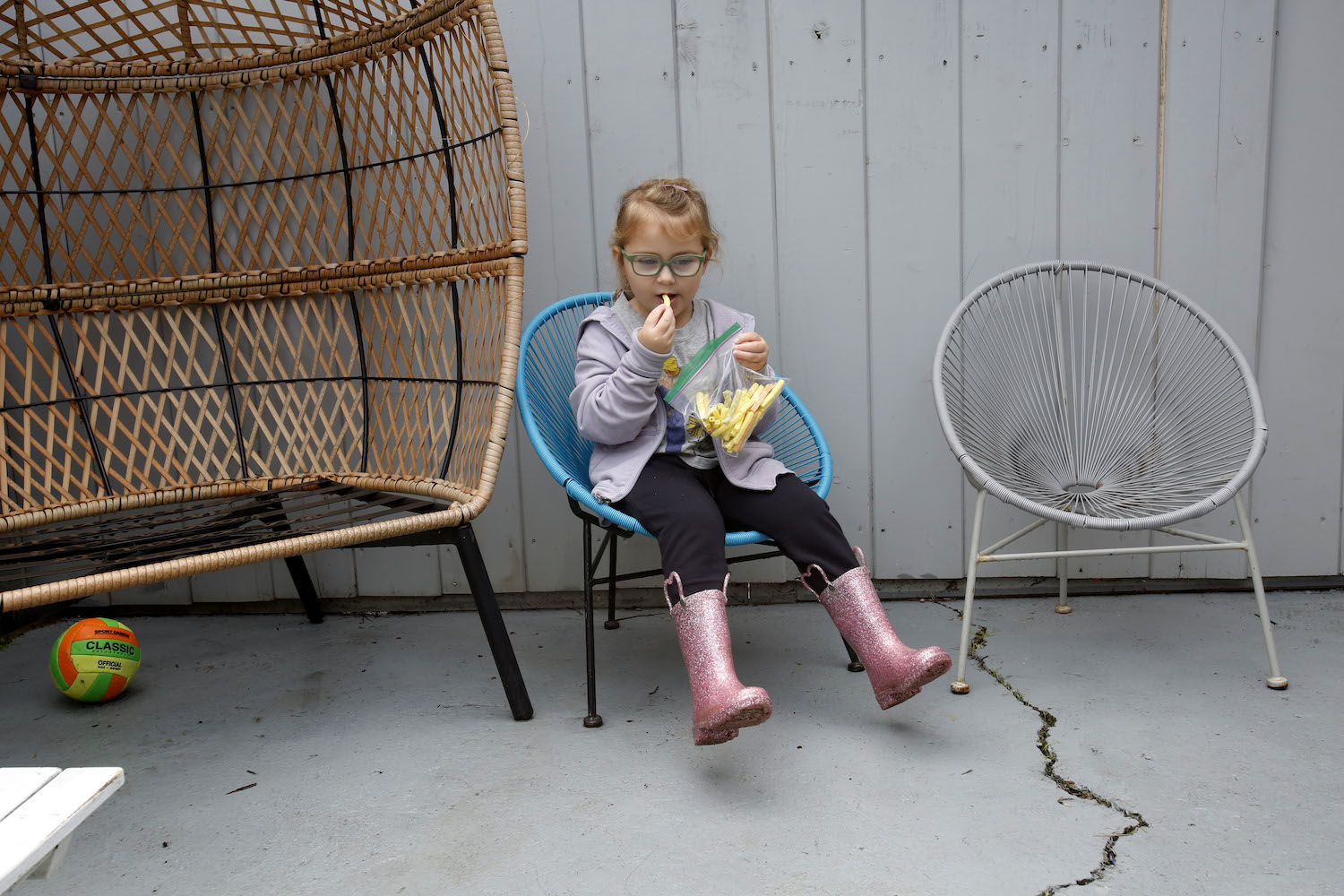
At Jannet Dominguez’s Bee Blooming Youth Gardening Program, kids can pause for a snack whenever they like.
One day a week, she hosts the Bee Blooming Youth Gardening Program at her home, teaching various subjects and lessons to children ages 18 months to 9 years. But there’s lots of wiggle room: Children can choose not to participate, get up to play, use the bathroom when they feel like it, or have a snack with much more freedom than most of their peers in public school. The Dominguez family has a few gardening beds in their front yard, where the students get hands-on experience and outside time with their friends.
Parents can stay or drop off their children for the four-hour program. One of them, Irene Hernandez, is a single mother with a full-time job in the healthcare sector.
On gardening program days, Irene works from the Dominguez family’s kitchen table on a tablet and takes phone calls outside on the sidewalk. “I’m taking more to the term ‘work-life blend,’” she says. “I can make anything happen as long as I have flexibility on both sides.”
She adds that, even if balancing her career and her kid’s education is, at times, stressful or hard to schedule, growing alongside her child makes it all worth it.
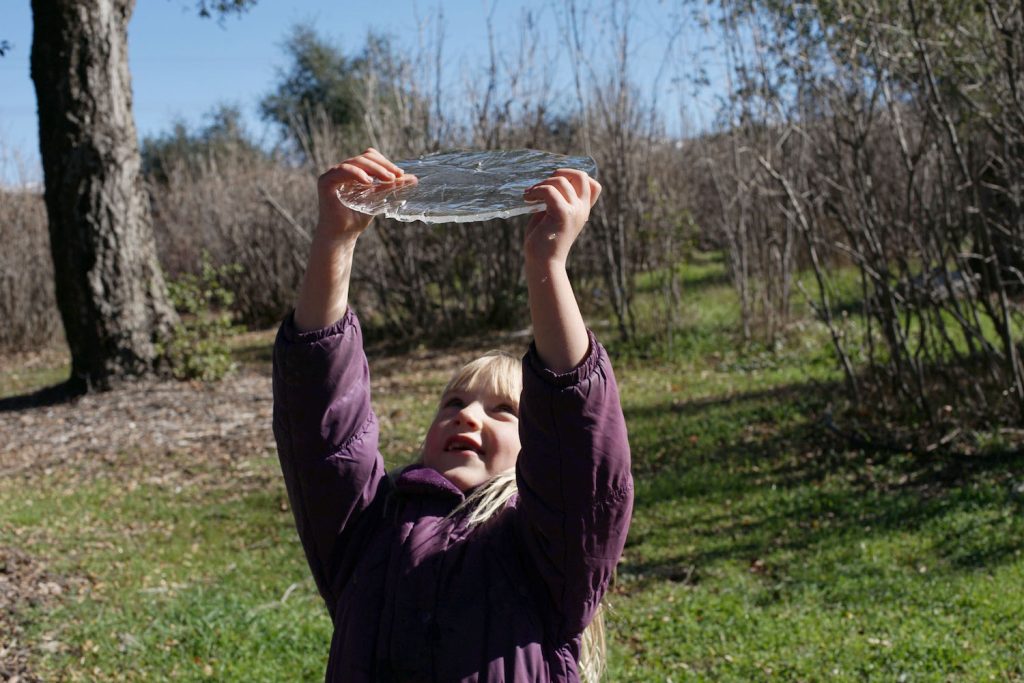
For the Coghills, it’s about giving their kids the freedom to be themselves. At their farm, we finish our tour, walking next to the garden where the family planted lemon verbena and strawberries. Paisley finds an ice plate that formed on a puddle during the overnight freeze. She holds it up, peering at the world through its patterned surface—just like her family is looking at life and childhood through a different lens.
“When we have our babies, we let them crawl and walk and stack blocks when they are ready—until they are 5,” Fauna says. “Then we put them in this box, and we make them learn the colors on Monday and the alphabet on Tuesday, and everybody has to learn the same thing at the same time for 13 years, and then, at 18, we say ‘Go, figure out life, who you want to be or how you want to make decisions.’ What if we didn’t do that? What if we never put them in a box?”
